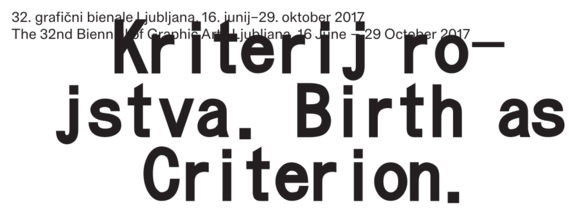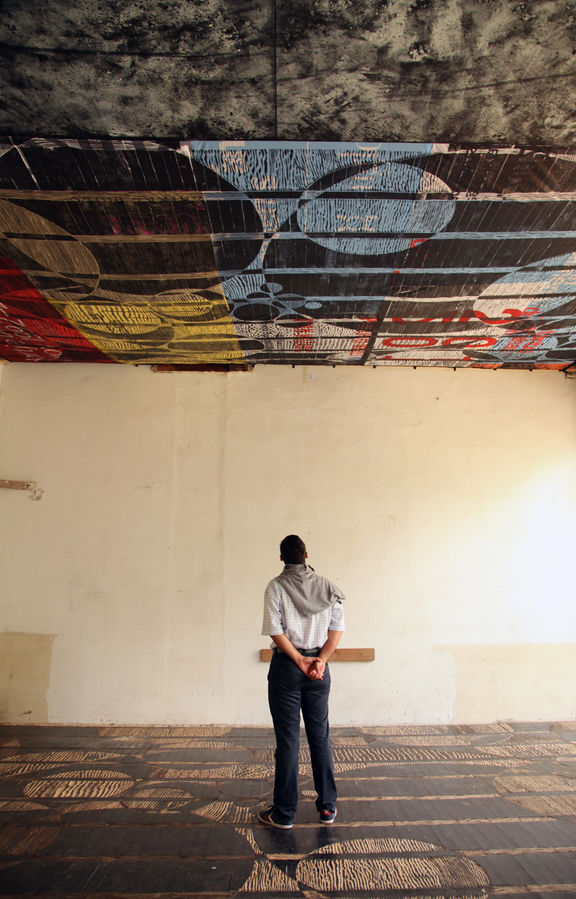Biennial of Graphic Arts
-
to
2 Jan 2011
17 Apr 2011
Mapping. Hits from the Ljubljana International Biennial of Graphic Art curated by Lilijana Stepančič in the frame of the 15th Tallinn Print Triennial
Mission
The biennial’s mission is to offer a critical review of contemporary developments in reproductive techniques and to point out the main streams which have influenced the development of contemporary graphic art. Through its history it is marked by three phases:
1955 - 1990s
From the very beginning the aim of the Biennial was to exhibit the best works and the largest possible number of graphic artists representing contemporary trends on all continents. In line with this approach, the only selection criterion was the quality of a limited edition print in any printmaking technique. During the Cold War, which cut short virtually every dialogue between the West and the East, the organizers of the Ljubljana Biennial nevertheless managed to bring together artists not only from the two opposing poles but also from the “Third World.”
1990s - 2001
During the 1990s a new perspective on art that was in favor of reproduction and multiplication techniques gained a foothold, thus creating favorable circumstance for the reaffirmation of the Biennial the revitalization of the concept. Towards the end of the 1990s a new, more modern organizational approach was adopted. National presentations of artists gave way to individual presentations. The organizer of the Biennial appointed curators and the number of selected artists was radically reduced. Participating artists were represented by more works or a project. Consequently, the 20th, 21st, 22nd and 23rd Biennials indeed introduced new features.
2001 - today
A truly radical change occurred with the 24th International Biennial of Graphic Arts in 2001. It was marked by certain changes, with emphasis placed on the substance of graphic arts in the context of newly emerging global art and the new internal organizational structure. The year 2001 was comprised on four thematic exhibition segments (Print World, Fundamina, Imaging Ulysses: Richard Hamilton's Illustrations to James Joyce, and Information - Misinformation, presented in the Delo newspaper, at Televizija Slovenija, Radio Študent (RŠ), on 100 Proreklam-Europlakat billboards around Slovenia, and on 50 large digital info-screens at underground railway stations in Vienna and in Der Standard newspaper). Each of four sections of the 24th Biennial were curated by one or the group of (inter)national curators. Featured were works of many established artists as Monica Bonvicini, Daniele Buetti, Claude Closky, Izabella Gustowska, Damien Hirst, Tracey Moffat, Thomas Ruff, Kara Walker, Zoran Mušič, Andy Warhol and others.
Since than each edition offered the new approach. In 2003, the edition was based on the importance of the multiplied image as a means of communication. The common feature of the exhibited works - artists' books, newspapers and magazines, photocopies, posters, newspaper interventions and projects, and prints - is the fact that they document the artists' ideas about their realized or unrealized, past or future projects. Participating artist included works of Isa Genzken, Liam Gillick, Irwin, Raymond Pettibon, Permanent Food (Maurizio Cattelan & Dominique Gonzalez-Foerster), Tadej Pogačar & P.A.R.A.S.I.T.E. Museum of Contemporary Art and many other established and disclosured artists.
The concept (work of Slovene art historian Jure Mikuž) for the the 26th Biennial entitled Thrust [Sunek] - underscored the 50th anniversary of the event - aimed to show the wide diversity of views on contemporary graphic arts, and process as an organizational approach to staging an exhibition. Mikuž has invited eighteen prestigious institutions from all over the world to each present an exhibition that attempts to answer the question of what are the graphic arts today? Cultural and geographic settings in which these institutions operate gave the character to this edition and constituted a post-colonial perspective on art. Involved institutions: Bharat Bhavan International Print Biennial (Bhopal, India), Bibliotheque nationale de France (Paris, France), Birmingham Museums and Art Gallery (Great Britain), Brooklyn Museum (New York, USA, Calcografía Nacional, Real Academia de Bellas Artes de San Fernando (Madrid, Spain), Graphica Creativa kansainvälinen taidegrafiikan triennaali (Jyväskylä, Finland), Istituto Nazionale per la Grafica (Rome, Italy) and others.
After the exhibitions of reproducible art at the 27th Graphic Arts Biennial presented the variety of art forms, from traditional printmaking to printed matter, video, photography, and computer- and Web-based art, the very last edition in 2009 offered the Biennial's central exhibition, entitled The Matrix: An Unstable Reality, again the focus on the contemporary graphic art in the broadest sense of the term. More than 80 internationally established and emerging artists working on traditional and contemporary printmaking to artist's books and interventions in the public space, in the mass media, and on computers) responded to the certain vital questions for society and art raised by the cult movie trilogy The Matrix. Among others the questions as "Does a medium stay the same once it incorporates new technologies in its discourse?" or "What is the social power of those who possess the matrix?" was reflected in the work of Carlos Motta, Nicola Lopez, Julieta Aranda, Tracey Moffatt, BridA, Vuk Ćosić, Jesper Fabricius, Jorgen Craig Lello & Tobias Arnell, Ivan Grubanov, Ahmet Ögüt, Société Réaliste, Adrian Sauer, Nasan Tur and others.
Venues
Next to the organising gallery International Centre of Graphic Arts at the Tivoli Mansion the Biennial takes place at several Ljubljana locations, including Museum of Modern Art, Cankarjev dom Culture and Congress Centre, a range of different urban open air venues and mass media fields. Based on the new concept of cooperation with the local scene and its protagonists, the recent edition extended venues to Alkatraz Gallery, Ganes Pratt Gallery, Jakopič Gallery, Kapsula Gallery, and Škuc Gallery.
Prizes and retrospective exhibitions of the winners
Since the beginning of the biennial each edition presents regular retrospective exhibitions of prizewinners from the previous event. Trough the history the Grand Prizes and the Grand Prizes of Honour received many internationally established artists like Robert Rauschenberg (1963), Joan Miró and Victor Vasarely (1965), Frank Stella (1993), Günther Uecker (1995), David Hockney (1997), Richard Hamilton (1999).
In 2001 one of the prizewinners was Damien Hirst and in 2003 a unique show of his drawings was organised in co-operation British Council Slovenia and exhibited at Tivoli Mansion. In 2003 Raymond Pettibon was awarded, in 2005 San Juan Poly, instead of the retrospective exhibition the Korean artist Jeon Joonho prepared the show of the "post-gogo" generation of South Korean artists featured as practice for winners in the Cankarjev dom Gallery (CD Gallery). The Grand Prize of 2009 went to Justseeds, artists' Cooperative from USA.
Influences
The event gained through years huge respect and influenced many international scenes and events. The Biennial in its early stage became the model for other graphic art events and biennials in the world: in the 1950s in Tokyo and Grenchen (Germany), in the 1960s in Krakow and Florence (Italy 1968) and in the 1970s in Bradford (UK) and Fredrikstad (Norway). Among still existing graphic biennials as the Biennial in Krakow, the Triennial in Tallin (it evolved from the Biennial of Graphic Arts of Baltic republics into an international triennial of graphic arts) and Grafika Creativa in Finland, the Ljubljana International Biennial of Graphic Art is still the flagship. Further, the biennial caused the establishment of the Ljubljana International Centre of Graphic Arts in 1955, before the secretariat was part of the Museum of Modern Art. Finally, the international exhibition in Ljubljana also had a crucial influence on the development of Slovenian artists and of the Ljubljana School of Graphic Arts.
See also
Some of the usual additional venues
- Museum of Modern Art
- Cankarjev dom Culture and Congress Centre
- Jakopič Gallery
- Alkatraz Gallery
- Ganes Pratt Gallery
- Kapsula Gallery
- Škuc Gallery




